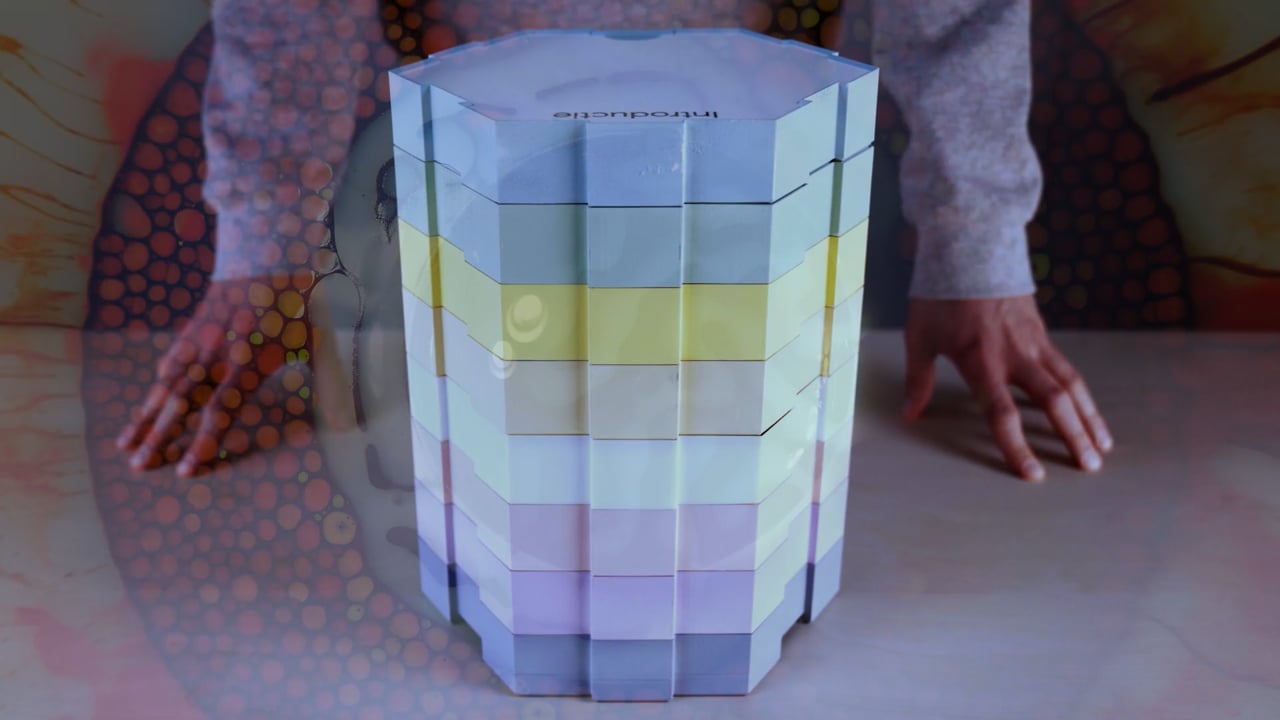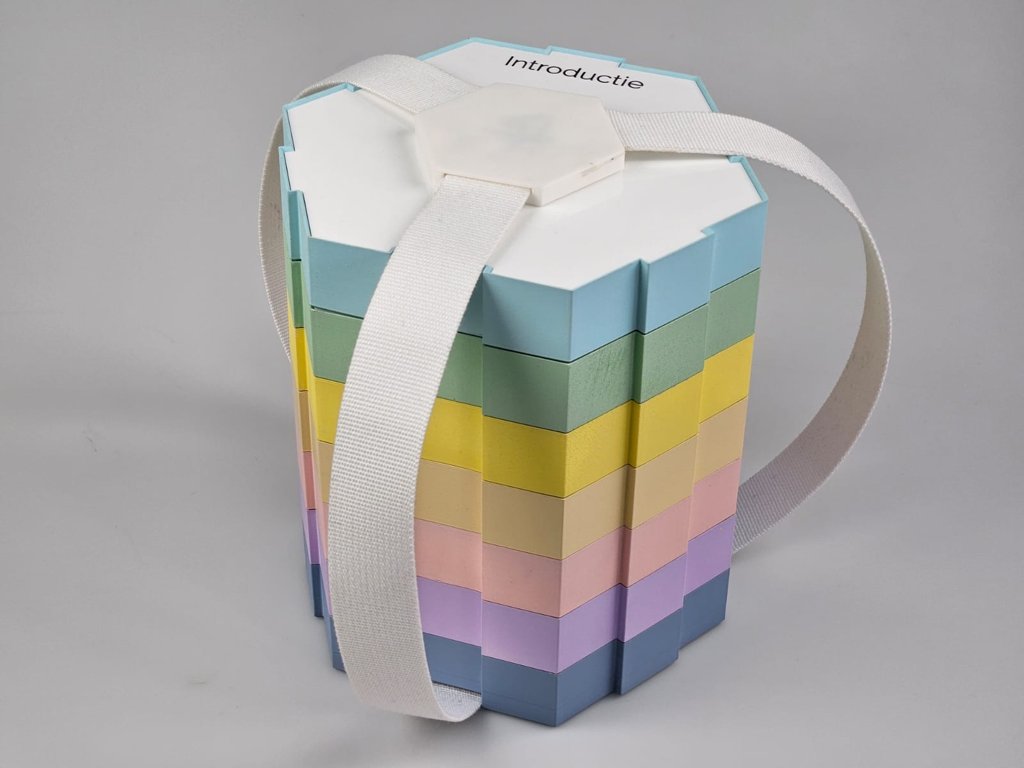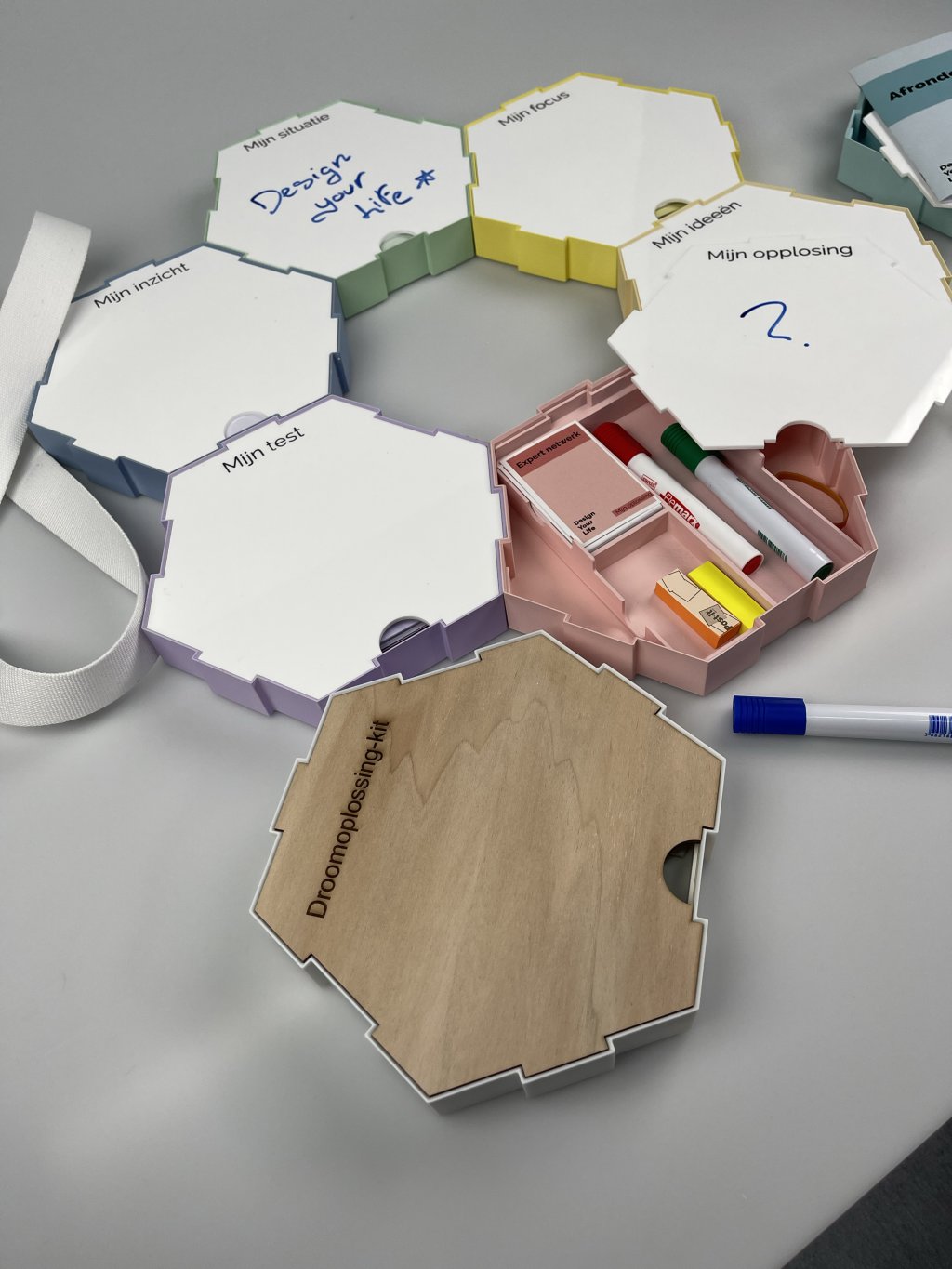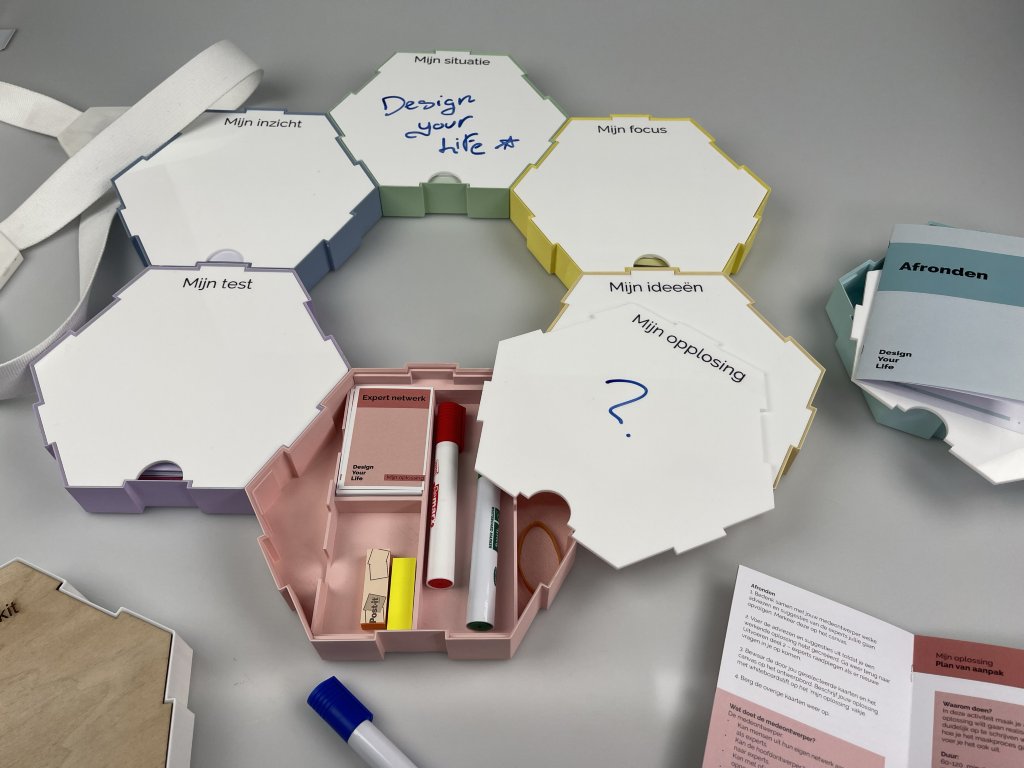Niels van Huizen, Thijs Waardenburg, Wouter Staal, Mascha van der Voort, Jan Pieter Teunisse, Maurice Magnée, Jelle van Dijk
Supportive technology can help autistic young adults gain more autonomy in their everyday lives, including in the areas of (semi-)independent living, education, and employment. Unfortunately, their uptake of supportive technology remains limited. A central issue is that the design of supportive devices relies too heavily on a medical model of autism.
In Design Your Life, we explored an alternative neurodiversity-based approach. Our mission was to create a toolkit to provide autistic young adults with the means to design their own supportive devices. In line with neurodiversity, the design process must do justice to the lived experiences, unique support needs, and embodied practices of the end user.
The Design Your Life Toolkit consists of design methods and techniques that guide the end user through six design phases, from ideation and concept development to realisation, testing and evaluation. A unique feature of the toolkit is that it's designed to be used at home or in a healthcare organisation, with no need for supervision by a professional designer.
Our toolkit went through two research phases. In the Design phase, design researchers, students, and participating stakeholders worked together to create a single, final toolkit. This was then assessed in the Evaluation phase, which assessed how well the toolkit was able to empower young adults with autism and caregivers with their embodied and professional practices. On display is the final iteration; a polished and refined version.
As mentioned, one of the primary challenges in the design of supportive devices for autistic young adults is the heavy reliance on a medical model of autism, which overly emphasises perceived deficits and limitations. In contrast, Design Your Life and its neurodiversity perspective usher in a critical counterpoint. This approach shifts the focus away from autism’s diagnostic profile, focusing on the ‘full experience of being autistic’. Consequently, the toolkit serves not only as an empowering and practical tool for autistic young adults to design supportive devices but also encourages critical thinking about how autism and other neurodiverse phenomena are often conceptualised in simplistic ways.







